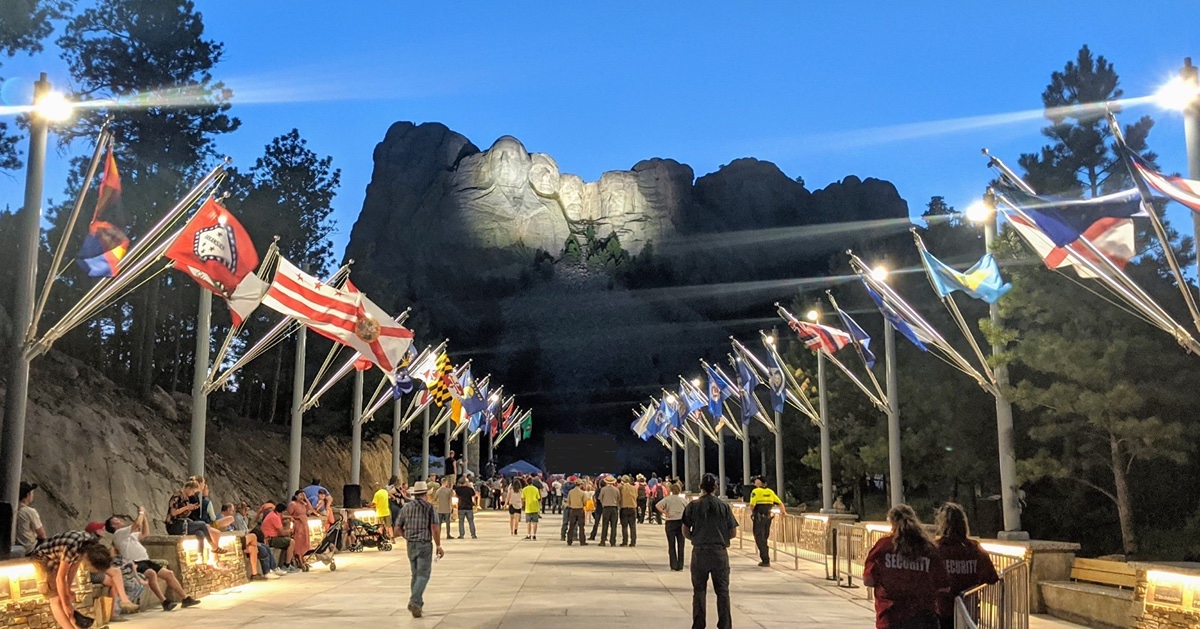Summer is a time when many people across America embark on journeys to explore the country’s most iconic destinations, including the 400 national parks that make up the National Park System. Last year, the parks saw a record-breaking 325.5 million visits, showcasing their enduring popularity as sought-after travel destinations. To ensure that these parks continue to provide an exceptional experience for all visitors, ongoing updates and enhancements are essential.
One individual who has dedicated the past 15 years to supporting and enhancing the National Park System is Brian Frailey, a landscape architecture alumnus. Frailey’s impressive portfolio includes notable projects such as improving pedestrian circulation at Mount Rushmore, restoring docks at the Statue of Liberty, and developing a new pier at Channel Islands National Park. His work has played a significant role in preserving and enhancing these treasured national landmarks.
Frailey’s journey into landscape architecture was not a conventional one. Initially majoring in business at Purdue University, he had a pivotal moment when he realized his true passion lay elsewhere. A meeting with the head of the landscape architecture program, Don Molnar, opened his eyes to a field that combined his love for the outdoors with his interest in design. This realization led him to pursue a career that aligned with his passions and talents.
After graduating, Frailey began his career at a firm in North Carolina, focusing on golf courses and historic resort properties. His early experiences in the industry, including setting up venues for prestigious events like the U.S. Open, provided valuable insights and skills that would later shape his career trajectory. Eventually, his path led him to Denver, Colorado, where he found an opportunity that would change the course of his career.
Joining the National Park Service as a project specialist, Frailey found his calling in managing projects at some of America’s most iconic locations. Working at the Denver Service Center, the professional office for the entire National Park System, allowed him to contribute to projects that had a lasting impact on the preservation and accessibility of these national treasures. His work was not just a job but a passion, as he realized the significance of creating spaces that held historical importance and ensuring their continued relevance for future generations.
One of Frailey’s most memorable projects was at Mount Rushmore, where he focused on improving pedestrian circulation and accessibility. The redesign of the Avenue of Flags and the emphasis on making the park more ADA accessible were key components of the project. Seeing the impact of his work firsthand, particularly in enabling individuals with disabilities to experience the park with their families, was a deeply rewarding experience for Frailey.
In addition to Mount Rushmore, Frailey also highlights his work at the Statue of Liberty, where he played a role in rebuilding the docks after Super Storm Sandy. The challenges he faced, such as logistics and construction on remote islands like Channel Islands National Park, tested his skills and determination. Despite the obstacles, Frailey’s commitment to overcoming challenges and delivering exceptional results has been a hallmark of his career with the National Park Service.
Reflecting on his time at Purdue, Frailey acknowledges the role the university played in preparing him for his career. The challenging environment, collaborative projects, and emphasis on problem-solving have equipped him with the skills and mindset needed to excel in the field of landscape architecture. The lessons learned at Purdue continue to guide him in his work, where creativity, innovation, and a commitment to preserving America’s natural and cultural heritage are paramount.
In conclusion, Brian Frailey’s journey from a business major to a landscape architect dedicated to enhancing America’s national parks is a testament to the transformative power of following one’s passion. His work exemplifies the importance of preserving and improving these cherished landmarks for future generations to enjoy. As visitors continue to flock to America’s national parks, individuals like Frailey play a vital role in ensuring that these natural and cultural treasures remain accessible and awe-inspiring for years to come.

